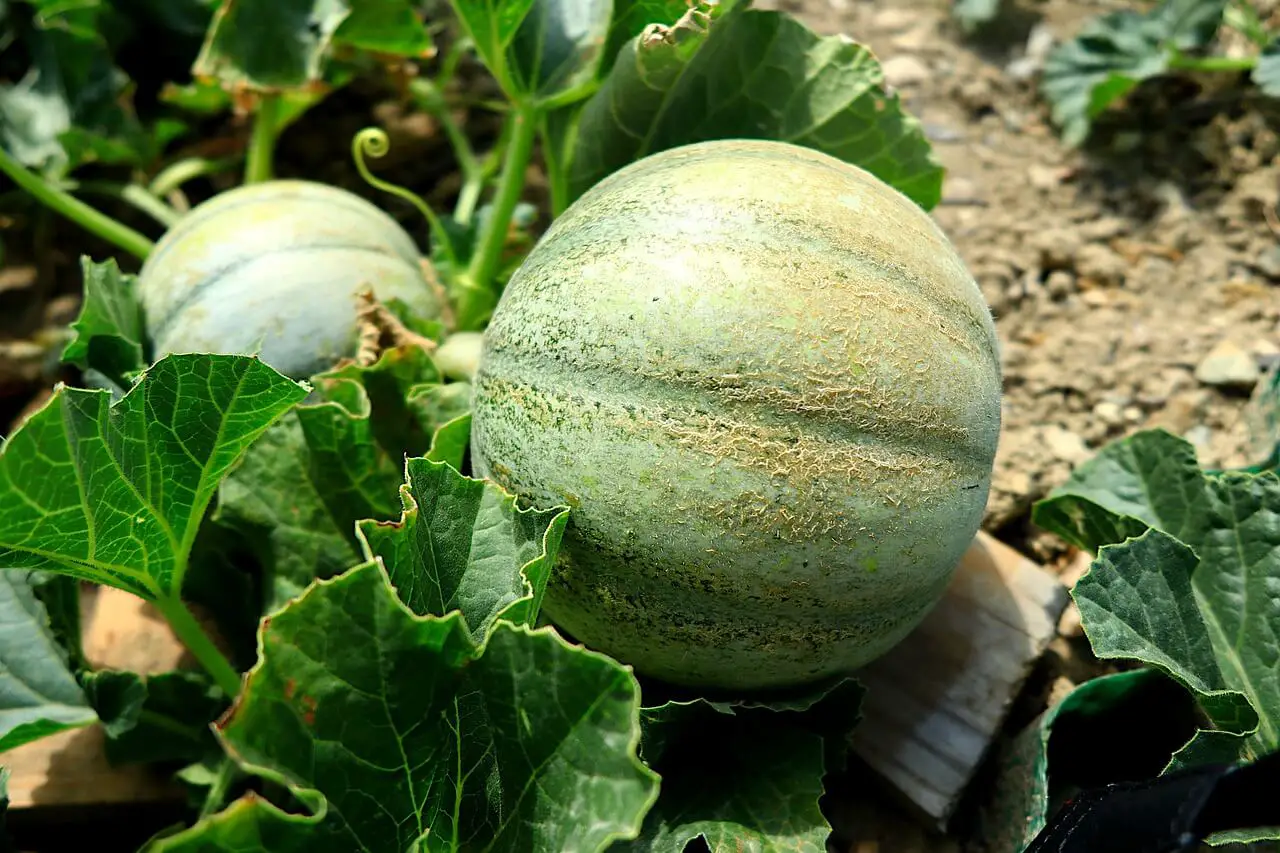How to Grow Melons in Cool Climates
December, 2022 |Whether you have a balcony garden in northern Michigan or a mini courtyard garden in the UK, it’s definitely possible to grow sweet, refreshing melons in a cool climate!
Watermelons are often listed as one of the hardest fruits to grow successfully, especially in northerly gardens. They usually need a long growing season paired with plenty of heat and sunlight. So in cooler climates, it can be challenging to create the right conditions for them to thrive.
In our guide to growing melons in cool climates, you’ll discover that there are some amazing cold hardy melon varieties to choose from. Plus, we’ll also share tips on how to get the best yield.

Choose a cold hardy melon variety
Usually considered a tropical fruit, there are now some fantastic melon varieties to grow in cooler climates. From the Blacktail Mountain watermelon to the Fordhook Gem melon.
If you’re looking for something smaller, the Jenny Lind cantaloupe is a great mini melon variety that grows well in cooler areas too.
When you’re browsing plant centers or seed websites, look out for the following characteristics:
- Many seed packets will list the ‘days to maturity’, e.g. how long it takes from sowing seeds to harvesting melons. Try and make sure that this is under 80 days. Especially if your area has a short growing season.
- Look for text that mentions how hardy they are like, ‘cold hardy’, ‘great for cool climates’, etc.
Starting seeds indoors
The key to growing tropical fruit in a cold climate is to start seeds off early indoors.
Most melon varieties can be started indoors 2-3 weeks before your last frost date. Make sure not to start them any earlier. If you start the seeds off too early, your seedlings will become leggy and weak and may be eaten by pests or damaged when you eventually plant them outside.
If your windowsills don’t receive much sun, it may be worth investing in a grow light.
A grow light allows you to start seeds earlier, as it can provide enough light to grow healthy seedlings even in the low light conditions of winter. So you could even start sowing your melon seeds 3-4 weeks before your last frost dates.
Choosing where to position a melon plant
Cold hardy or not, all melons need their growing conditions to be as warm and protected as possible. Weather, space, and soil conditions all play a vital role in the health of a melon plant.
Weather
To keep things as hot as possible, try to grow your melon plants in the sunniest part of your garden. The best position should receive plenty of sunlight and may have a fence or wall protecting the area from harsh wind.
A greenhouse would be an ideal place to grow melons as the temperature and humidity will be higher.
If you have room, a mini greenhouse could be a great addition to your small garden space. However cold hardy melons will still grow well in a container placed outside in a sunny location.
Space
Like pumpkins, melons can take up lots of space in a small garden. Unless you grow them vertically!
Growing melons vertically is a great way to maximize space in your garden. If you’ve got a narrow balcony or mini garden you could grow your cold hardy melons up a trellis. Their long vines and big leaves can extend upwards instead of taking up valuable floor space.
Just make sure to tie up any larger melon varieties with a melon hammock or sling!

Soil conditions
Areas with a cool, temperate climate will usually receive more rain. As melons need lots of moisture, this can be beneficial, however waterlogged soil could damage your melon plant. Excess water in the soil may rot the roots, which could kill the plant or reduce how many melons it produces.
So if you have heavy, clay soil it may be best to grow melons in a container filled with loose compost instead.
So to summarise, the best conditions for growing cold hardy melons are…
- as much full sun as possible
- minimal or no shade
- near a building to pick up any residual heat
- near a fence or hedge to protect from high winds
- try growing your melons vertically to save space
- make sure the soil doesn’t get waterlogged

Growing cold hardy melons in containers
Growing your melon plants in a container has a number of benefits. As we mentioned in the previous section, you’re able to fill containers with fresh, loose compost to keep the roots well-fed and healthy.
Also, if your garden is hit by some unexpected weather, containers could be temporarily moved to a safer location. Whether you’re keeping them safe from frost, storms, or even floods.
Care tips for cold hardy melons
Once summer begins, your cold hardy melons can be treated much the same as other melon varieties. They’ll need plenty of moisture and as much sun as possible. But there are other things to keep in mind…
- Keep an eye on weather forecasts to make sure there’s no late Spring frost. If you get late frost in April, it could kill off your young melon plant. The same warning applies to autumn too. If your area is hit by an earlier autumn frost, it could damage the plant. If you’re expecting frost, you could put down some mulch or fleece to try and protect the plant before you’re ready to harvest the fruits.
- Make sure the soil is kept moist but not water-logged. You don’t want to overwater your plants and waste water.

With these tips, you’ll be able to give your melon plants the best start. And you’ll soon be enjoying the fresh, sweet taste of melons grown in your own mini garden!
Interested in growing cucumbers too? Check out our list of the most cold tolerant cucumber varieties to grow in cooler climates.
Featured image: Image by RENE RAUSCHENBERGER from Pixabay





